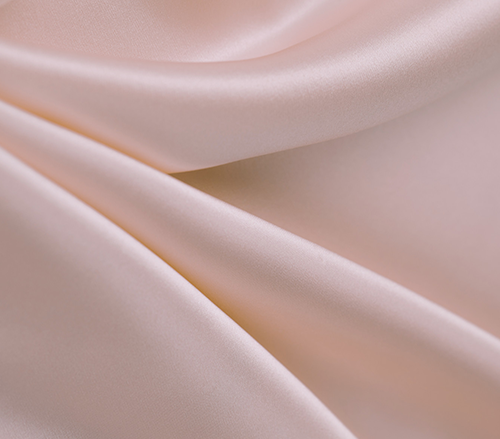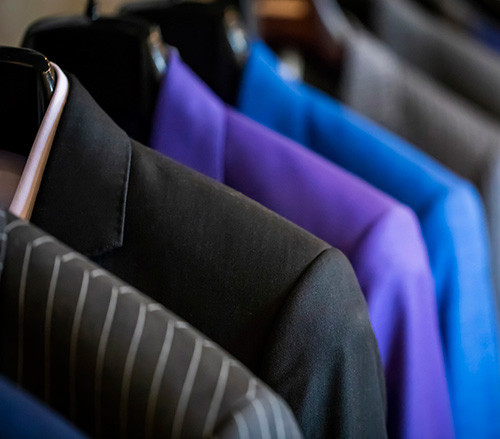
Applications
Fuju has a number of doctors and masters, focusing on product applications in each field, and providing solutions for many customers
wool fiber under the humid and hot conditions, through the repeated action of mechanical external force, the fiber assembly gradually shrinks and closes, and intersperses and entangles each other, interlacing and felting. This property is called the milling of wool fibers. The process of using this feature to process woolen sweaters is called woolen sweater milling. Milling is a main content in the finishing process of woolen sweaters. In order to create a good condition for milling and speed up the speed of milling, chemical agents are usually added during milling. At present, the milling process is mainly used in woolen sweaters such as cashmere, camel hair, rabbit hair, and shetland wool. Worsted woolen sweaters are often cleaned and wet finished or lightly finished at room temperature for a short time. To improve the appearance.
One, the purpose of shrinking
The purpose of woolen sweater milling is mainly to improve and enhance the inherent quality and appearance of woolen sweater products.
1. Milling can make the fabric compact, shorten the length, increase the square meter weight and thickness, increase the strength, and increase the elasticity and warmth retention.
2. The surface of the milled woolen sweater shows a layer of fluff, which makes the appearance beautiful, the hand feels rich and soft, and the color is soft. In addition, the fluff produced by the milling plays a role in diluting and concealing certain original defects of the woolen sweater, so that it will not be obviously exposed on the surface of the fabric.
2. Milling mechanism
The reason why woolen sweaters can be milled is mainly because the wool fiber itself has milling properties, which is an internal cause; and certain temperature and humidity conditions, Chemical reagents and external forces are the external factors that promote the milling of wool fibers. The internal reasons for woollen sweaters are as follows.
1. Scales of wool:< /span>
The surface of the wool fiber is covered with scales, and the free end of the scale points toward the tip of the wool fiber. When there is a milling agent, the wool fiber is wetted Expansion and expansion of the scales. At this time, a certain external force is applied to the wool, and the wool fibers will move. Because the movement of the surface scales has a directional friction effect, the direction of movement must point to the root end. After the external force is removed, the adjacent wool fiber scales interlace each other, which makes the wool stay in a new position. When the external force is applied again, the relative displacement of the wool fiber is caused. In this way, the external force is repeated many times to make the wool continue to produce Slowly creeping, so that the fibers are tangled, and the hair ends protrude on the surface, resulting in milling. Therefore, the existence of scales is the most fundamental reason why wool fibers can be milled. That is to say, only fibers with a scale structure appearance have milling properties. The more scales, the more conducive to milling; while fibers without a scale structure appearance do not have milling properties, such as acrylic and other chemical fibers. Has milling properties.
2. Wool curl:
Because the wool fiber has a double-sided structure, the fiber has a natural spatial curl. When the external force stretches the wool, the wool will be straightened and removed by the external force. Later, the wool will return to a curled state, and the neighboring wool will be tangled together in this process. When the wool is squeezed, the wool fibers move and move. This movement is not fixed in a fixed direction, but messy and irregular. It makes the wool fibers intersperse with each other, so the more curling the wool, the easier Tangle, the more conducive to milling.
3. The elasticity of wool:
wool fiber deforms when subjected to external force. Due to the good resilience of wool fiber, when the external force is removed, the sharp elastic deformation will quickly recover and make the fiber Relative movement occurs. When the external force acts repeatedly, this relative movement will occur multiple times between the fibers, which promotes the interlacing and entanglement of the fibers, which is beneficial to the milling.
4. Gelatinization of the scale layer :
During the milling process, because the wool fibers are soaked in the hot milling liquid, the tip of the tile-like scales covering the fiber surface is prone to a certain degree of Gelation, under external force squeezing, there may be local bonding between the fibers at the gelation point, which is conducive to milling.
woolen sweater milling is a complicated process, which is the result of the interaction and mutual influence of many factors. But the fundamental point lies in the existence of scales, which makes the wool fibers entangle with each other and produce directional movement under the action of various forces, so as to achieve the purpose of milling.
The finishing that improves the performance of silk fabrics mainly includes anti-wrinkle, antistatic, water and oil repellent, flame retardant, dimensional stability, washable and wearable. Finishing can not only eliminate the shortcomings of silk, but also improve other aspects of performance.
The wash and wear performance of silk fabrics has become increasingly important. Appropriate softeners, elastomers and synthetic resins must be used to meet the requirements. Finishing can make silk fabrics functional. The focus of silk fabric finishing is currently focused on anti-fouling and flame retardancy. Another important finishing area is to maintain sanitary and fresh antibacterial finishing. According to needs, the finishing process of silk fabric involves many processes. The selection of the finishing process must take into account the required silk feel and drape. The correct combination of finishing equipment and the order of finishing processes are the key to determining the final style of silk fabrics.
1. Antistatic finishing
silk can be grafted with monomers to improve the static electricity accumulation performance and make the amount of static electricity accumulated on the silk fabric appropriate. The higher the amount of styrene, the more static charge on the silk grafted with styrene. Antistatic agents are mainly divided into the following two types.
The role of static eliminator is mainly to improve the moisture absorption of the fabric. Finishing silk fabrics with specific water-soluble vinyl monomers and specific acids can produce static elimination effects. Moreover, the electrical conductivity can be improved by depositing specific metal particles on the fabric. With metallic silver coating, hindering the electrical conductivity of silk fibers can also produce static elimination.
The principle of antistatic agent is to impart antistatic properties to the fabric by reducing the friction between fibers and between fiber and metal, which is mainly the result of lubrication. Generally, specific alkaline lubricants such as metal oil and butyl stearate are used as antistatic agents.
Second, waterproof and oil repellent finishing< /span>
water- and oil-repellent finishing can give the fabric water- and oil-repellency, while also having stain resistance, and does not affect the feel of the fabric.
The ideal waterproofing agent should have as little impact as possible on the air permeability, without changing the wet staining properties of the fabric, compatible with other finishing agents, and easy to apply On the fabric, the water-repellent property is resistant to washing and dry cleaning.
The principle of water- and oil-repellent finishing is to reduce the surface energy of the fabric in the air in order to block oil or oily contamination.
Teflon coating agent is the more commonly used fabric oil-repellent surface finishing agent. Other important water repellents are: (1) Aluminum compound used alone or together with soap; (2) Wax dispersant; (3) Wax dispersant containing aluminum salt; (4) Wax dispersant containing zirconium salt; (5) Pyridine compound; (6) Wax thermal hardening inhibitor; (7) Silicone; (8) Fluorine Compound.
When natural silk is grafted with steam of hexafluoropropylene, vinyl fluoride, vinyl chloride and acrylonitrile, it is waterproof, oil repellent, and mineral acid resistant And light stability will be improved, these finishing agents can be used to roll-bake-baking method or dipping method to treat silk fabrics.
3. Flame retardant finishing
silk is self-extinguishing, and their "Limited Oxygen Index" (LOI) is approximately 24. However, since silk fabrics cannot safely pass the "vertical flame test", flame retardant finishing is still required.
The laws of Western countries clearly stipulate that children’s clothing, especially pajamas, must be flame-retardant.
flame retardant finishing agent must meet the following requirements: add an appropriate amount (approximately 15-20%) to obtain satisfactory results; should be resistant to household washing; should not cause The loss of fabric strength should not affect the feel of the fabric; it should not change the color of the fabric; it should not affect the light fastness of dyes on the fabric; the air permeability of the fabric should not be affected.
The self-extinguishing property of silk is imparted by the reaction products of polyhalogen acids with a ring core, such as chlorsaccharic acid and thiourea. Technicians have discovered through research that titanium hexachloride, titanium tetrachloride and zirconium chloride can also give fabrics good flame resistance. The flame retardancy of silk fabrics can also be improved by finishing with non-ionic complexes of zirconium, titanium or tungsten. Since these finishings are carried out under acidic conditions, they are consistent with the acid dyeing conditions of silk fabrics.
specific phosphorus-containing compounds can also improve the flame retardancy of silk fabrics, and the wrinkle resistance and shrinkage properties are also improved. In the presence of zinc fluorocarbons, the above-mentioned composite has good flame retardancy, and washing fastness can also be obtained to a certain extentImprovement.
4. Antibacterial finishing
antibacterial finishing is a finishing method that gives fabrics special functions. The main purpose is to protect fabrics from bacterial invasion and protect consumers from spreading pathogenic bacteria.
Because textiles can provide enough conditions for bacteria to multiply, they can destroy fabrics in many ways. These bacteria are everywhere, including: fabric and non-textile surfaces, the human body and all the surfaces we touch.
bacterial growth will have a negative impact on human life style: such as annoying odor, bacterial contamination, allergic reactions, diseases and infections, and product degradation .
antibacterial finishing can prevent the propagation of bacteria on the surface of the fabric, give the fabric hygienic and freshness, prevent the generation of odor, control the generation of bacterial dirt, and improve The feel of most fabrics prevents skin irritation.
the antibacterial properties of silk fabrics can be improved by impregnating the following compounds: N-(2,2-dichloroethylene) salicylamide 0.01~0.25% Solution; salicylic anilide; dodecyl trimethylamine chloride, etc.
phenolic compounds are widely used because they are moderately active and can be deposited on the fabric surface in the form of an emulsion to compound into a polymer film. Compared with unfinished fabrics, silk fabrics finished with antibacterial agents have better antibacterial properties. The antibacterial agent can be used to treat the fabric by rolling, dipping or spraying. The baking temperature is 130-135℃.
5. Lightfast finishing
The chemical sensitivity of silk to light has always been one of the biggest obstacles to the application of silk fabrics. Fabrics exposed to the sun absorb ultraviolet rays. In the presence of oxygen and moisture, many free radiation reactions will occur, resulting in fiber brittleness, so it is necessary to finish the silk to prevent free radiation. In other words, use ultraviolet absorbers or light stabilizers to finish silk fabrics.
used to use chemicals such as thiourea, amine thiocyanate, and tannic acid as light-fast finishing agents for silk fabrics, but UV absorbers spontaneously appeared Later, the lightfastness finishing of silk fabrics has been fundamentally changed in technology.
The main types of ultraviolet absorbers are: (1) 2-hydroxybenzophenone (industrial) derivatives; (2) phenyl ester and salicylic acid Esters (Ⅲ and Ⅳ); (3) 2-(2-hydroxybenzene)-benzotriazole (II) derivatives; (4) cinnamic acid substituted derivatives (V); (5)p- Aminobenzoate; (6) Polymeric and polymerizable absorbents; (7) Stabilizers, complexes and other salts such as nickel chelate (VII).
The selection of the type and concentration of ultraviolet absorber depends on the composition of the matrix, the thickness of the sample, the desired color and the process conditions. The general concentration in use is 1%, and the concentration of finishing agent can be as low as 0.2% of silk weight. The fabric can be finished by dipping in acid dye or disperse dye bath.
The light stability of silk is very important, so the development of this kind of finishing agent is given priority internationally.
-
 The finishing to improve the performance of silk fabrics mairaed moreFunctional finishing of silk fabrics
The finishing to improve the performance of silk fabrics mairaed moreFunctional finishing of silk fabrics -
 1. The mechanism of organosilicon defoamer: The ability of sraed morePrinciple, type and application of silicone defoamer
1. The mechanism of organosilicon defoamer: The ability of sraed morePrinciple, type and application of silicone defoamer -
 The popularity of popular colors in home textiles further inraed moreThe five leading trends of home textile fabrics
The popularity of popular colors in home textiles further inraed moreThe five leading trends of home textile fabrics -
 Shinchem SS 6175 and Shinchem SS 6186 can be used for non-irraed moreNon-iron finishing application scheme for shirts and suits
Shinchem SS 6175 and Shinchem SS 6186 can be used for non-irraed moreNon-iron finishing application scheme for shirts and suits
